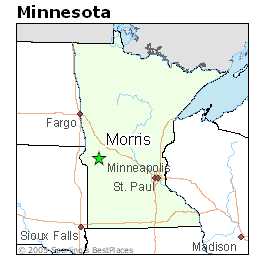"Pomme de Terre" gets heard quite a lot in our area. One might wonder why there is no actual town that bears the name. It rolls off the tongue comfortably, is appealing.
"Pomme de Terre" adorns our city park out by the dam. The park was once a state park. Today it is a fixture for camping and summer relaxation as with the "spray park." Sometimes in summer I rinse off my body at the spray park in lieu of a regular shower. I only do that when there are no little kids using it, and the kids do indeed gravitate to it. A nice community resource, as is the whole Pomme de Terre Park.
Pomme de Terre! The name actually adorns another place fairly close to our community. "Fairly close" is a relative description. Thus the place that I cite is about nine miles to the north. It too is a park. It has a boat landing. The "Pomme de Terre" name is not such a simple matter there. I grew up habitually calling it Pomme de Terre, then later discovered on official maps that it is "Perkins Lake."
Perkins was a well-known family out there. But a name is a name and it should invite consensus. There's a sign at the access that says "Pomme de Terre." I shall continue feeling comfortable calling it that.
One might suggest there is potential for confusion - eh? - with two parks so close together being referred to the same way. Let's look at it like this: if you're a lifelong resident you'll bear in mind the need to distinguish sometimes. "You just have to know." Words to live by in a small community.
Many lifelong residents here may not know there was, indeed, a town called "Pomme de Terre." Not far from here. Today the place might be called a "ghost town." Another term I have seen in research is "extinct town." Towns can rise and fall for any number of reasons. Serendipity could play in. Most often I would say it's bad fortune. "It was just not meant to be."
It has to be considered sad that a little hamlet with unmistakable charm "bites the dust," as it were. There are some old remnants of this early settlement called "Pomme de Terre." Enough to get the place located and to provoke the imagination for how life was there. Can't help but imagine the "might have beens."
Take the wayback machine back to the immediate post-Civil War years. That's when European settlers began filtering into these parts. Also "manifest destiny" I guess. So a stake got planted for a new fledgling town, "Pomme de Terre." It was the first village settled in Grant County in 1868. It was platted in 1874 in Section 24 of Pomme de Terre Township.
These were stagecoach days. Imagine the typical old TV western. Opens one's eyes for what it was like as "the West" opened up here in the Upper Midwest.
There was a stagecoach route from St. Cloud to Fort Abercrombie. The route crossed the Pomme de Terre River, so there's another "Pomme de Terre" name of course. (Plus our golf course in Morris has always had the name.)
Fort Abercrombie was on the Red River. Our well-known Wadsworth Trail in the immediate Morris area began in St. Cloud and headed for Fort Wadsworth, later to be called "Fort Sisseton." Such intrepid travelers these people were. The indomitable nature of the human spirit I guess.
"Manifest Destiny" meant that however cruel it might seem, the Native Americans would have to step aside for the values and norms of the oncoming white people. Our UMM campus began as a way of acclimating the Natives to the European standards and culture. Frankly it was considered a failure, though well-intentioned.
The transition appears to have been grudging for the Natives. The Natives rebelled in an outright "war" here in Minnesota that coincided with the U.S. Civil War. Southern Minnesota had the brunt of the conflict.
I grew up hearing that there were never any permanent Native settlements in the Morris area. But it appears we were not totally overlooked by the Natives. I guess there was more of a nomadic presence.
Is it wise to romanticize the traditional Native culture? That is a very good question. The old crusty CBS commentator Andy Rooney got in trouble, I recall, for suggesting there was no reason to feel enthralled. I believe he called the Natives' religion worthless or meaningless or some such thing.
Reaching a head
Bad blood grew to where there was a mass hanging of rebellious natives in Minnesota. It is considered tragic today. War is always tragic, n'est-ce-pas? And then hindsight goes to work. Shall we show restraint in passing judgment?
 |
| There's a cemetery |
I first learned about the Lake Chrissey name when I was writing an article for the Morris newspaper about the development of the biking/walking trail east of town. "Lake Chrissey - that's a name I haven't heard." But it stayed in my head.
The village had promise
The ill-fated village of Pomme de Terre began developing the attributes of a nice small community. A grist mill went up in 1873. It burned down in 1887. The town had a post office from 1868 to 1902.
The town reached its apex with two stores, two blacksmith shops, the grist mill, elevator and hotel. Oh, plus the "saloon" to make it conform to the TV western model! I wonder if there was a local "madam." Ahem.
(The photos you see here of the town site and cemetery are by Duane Peterson.)
Alas, storm clouds began forming re. the town's future. One was how the county seat designation eluded the place. A motion to designate "Pomme de Terre" failed. Elbow Lake got the nod, or the place that would come to be known as Elbow Lake. Quite the deal in those days, to be chosen for the "county seat."
In modern times do we need so many officially designated counties? Tom Brokaw wondered about that on a TV discussion program. "It may have made sense in horse and buggy days," Brokaw said. I'm a skeptic myself. Old ways are often hard to dislodge.
The town of Herman picked up steam to further endanger Pomme de Terre's future. Then, another major blow as the railroad bypassed the town, choosing instead a route to the north through Ashby. "Pomme de Terre" wilted. The early charm and promise of this town next to the river wilted.
You can visit there
Are you interested in seeing the old site of the village with its residual reminders? Here's what you do: Go three miles east of Elbow Lake on Highway 79, then five miles north on County Road 21. This ends where it meets County Road 4. "Pomme de Terre" was just east of this intersection. The old schoolhouse is a quarter of a mile to the east. It's still there along with a cemetery.
The village got the Pomme de Terre name from a lake to the south. My parents told me when I was a kid that Pomme de Terre is French for "potato." It's not that simple really. We learn that the name literally means "apple of the earth" which can be understood to be a potato. Mom and Dad were basically right.
Clarification: "Pomme de Terre" was applied to the edible ovoid-shaped root of the wild turnip. The Natives called this turnip plant "tipsinah." These Indians were Dakota or "Dakotah."
"Newsbreak Original" calls Pomme de Terre "the forgotten abandoned town." Maybe you conjure up ghost stories. But I'm not superstitious. Hmmm.
The website notes that "the Sioux people" frequented the area. Again a nomadic suggestion. The Morris Centennial program at the fairgrounds (way) back in 1971 began with an Indian character standing atop a pole. I heard some buzz around me that the portrayal lacked authenticity as "there were no Indians in Morris." Let's re-phrase that to "nomadic," I guess.
It was southern Minnesota like around Sleepy Eye that got swept into the Indian wars of 1862. Morris once had a dentist Dr. B.F. Ederer who did quite a bit of writing about the Minnesota conflict.
The "Newsbreak" site notes that Pomme de Terre was at its height "an important center in the region's history." Shall we feel sad that it went belly-up? A part of me feels sad.
The history is a reminder that no community should feel complacent about its standing. Look at the attributes that got you to the present time. Try to ensure they remain viable. Morris looks pretty solid. Knock on wood?
 |
| (wikipedia) |
Look at Clontarf down the road from Hancock. It once had the potential to be a quite thriving place, whereas now it's a lot like the town in the old TV show "Petticoat Junction." Charming place I'm sure. It faded but not to the extent of Pomme de Terre. Clontarf is a landmark for people driving between Morris and Benson, like when I had braces on my teeth from ol' Dr. Albani in Benson. Nice guy with lively personality. Sorry, I probably did not wear my "retainer" as much as was prescribed.
What does it cost to get braces for your child today? One might shudder. The Dave Holman family of Morris celebrated a big wedding anniversary at "The Clontarf Club." Only time I was ever there.
- Brian Williams - morris mn minnesota - bwilly73@yahoo.com























No comments:
Post a Comment